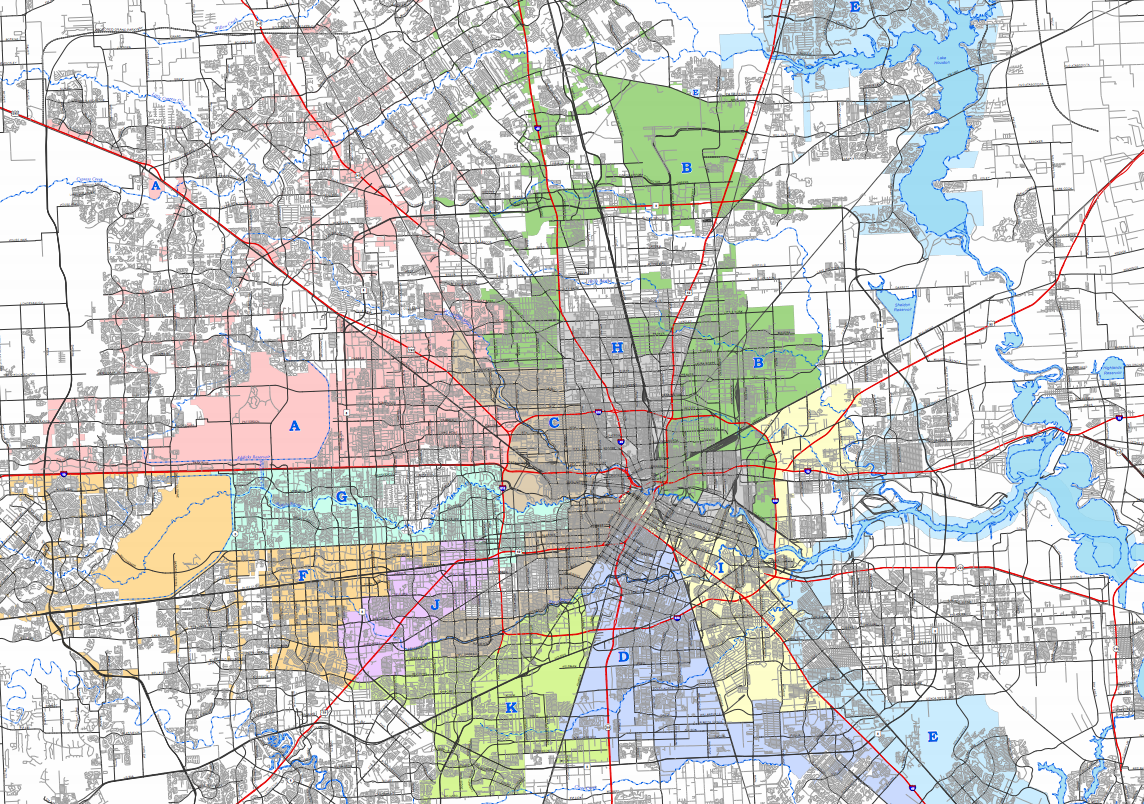Now the fourth largest metropolitan area in the country, Houston is very much a city in flux. As Houston has grown, annexations and infill development have left a patchwork of neighborhoods -- high-rises here, horses in the backyard there.
But even with such neighborhood variation, a recent survey found relative consensus on the quality of key city services.
Houston residents tended to feel positive about the city's fire and emergency medical services, garbage pickup and libraries; they had less positive feelings about its approach to flood prevention, streets and sidewalks. Attitudes toward affordable housing, bus services, animal control and sidewalks saw the greatest variation across city council districts, according to the report's findings.
The survey of some 3,000 residents, taken through the city's CitizensNet service -- a regular email newsletter -- asked residents to rank 20 city services and nine quality of life measures. But researcher Robert Stein, a political science professor with Rice University, said the survey was just the first step for the city, which hopes to use the same method to gather community feedback ahead of budget decisions and to better tailor emergency responses.
"It's a large database, close to 150,000 subscribers," said Stein, who conducted the research with Elizabeth Vann, the director of programs and partnerships for the Center for Civic Leadership at Rice University, where Stein also works as a faculty director. "It's (typically) used to give out information, but we were asked to see whether it could be used as a reliable and granular means of assessing emergency issues and policy issues." Article continues below charts.
The idea, said Stein, is to create a method of not only gathering feedback on those policy issues but also generating policy ideas. With such a big, representative sample, the city can use the newsletter for a variety of applications. The survey was a perfect opportunity to test that potential.
One of the lowest-ranked items -- the city's response to flooding -- is one of the areas where Stein sees potential. "Flooding is like snow," he said. "It means a lot of different things to different people. For some people, it's inconvenient. To other it's loss of property. And to others it's death." Better input and more targeted information from the city during an emergency could help ease all of those things.
Overall, Stein said, the results seemed positive. "If you’re the mayor (or) the city council, you have to probably be happy about them," said Stein. He added he was intrigued that, more often than not, there was agreement on ratings across communities, age groups and races.
There were some points of difference, though. Council Districts I and J, on the west and east sides of town, gave high marks on affordable housing, while districts Districts H and B, both on the north side, rated it lowest. District I also rated bus services the highest, while District G, in wealthy west Houston, gave it the lowest ranking of the council districts. Article continues below map.
The biggest differences showed up when residents were asked to rank their overall neighborhood quality. District E, in Kingwood and southeast Houston, had the highest rankings. District D, in south Houston, had the lowest.
Typically, older residents as well as people who had lived in the city longer, tended to rate things more positively. "Anyone who’s been here longer," Stein said, "they see what's happened in the city, things have gotten better. In an objective way, I think you can measure that. It's really become a modern city."



